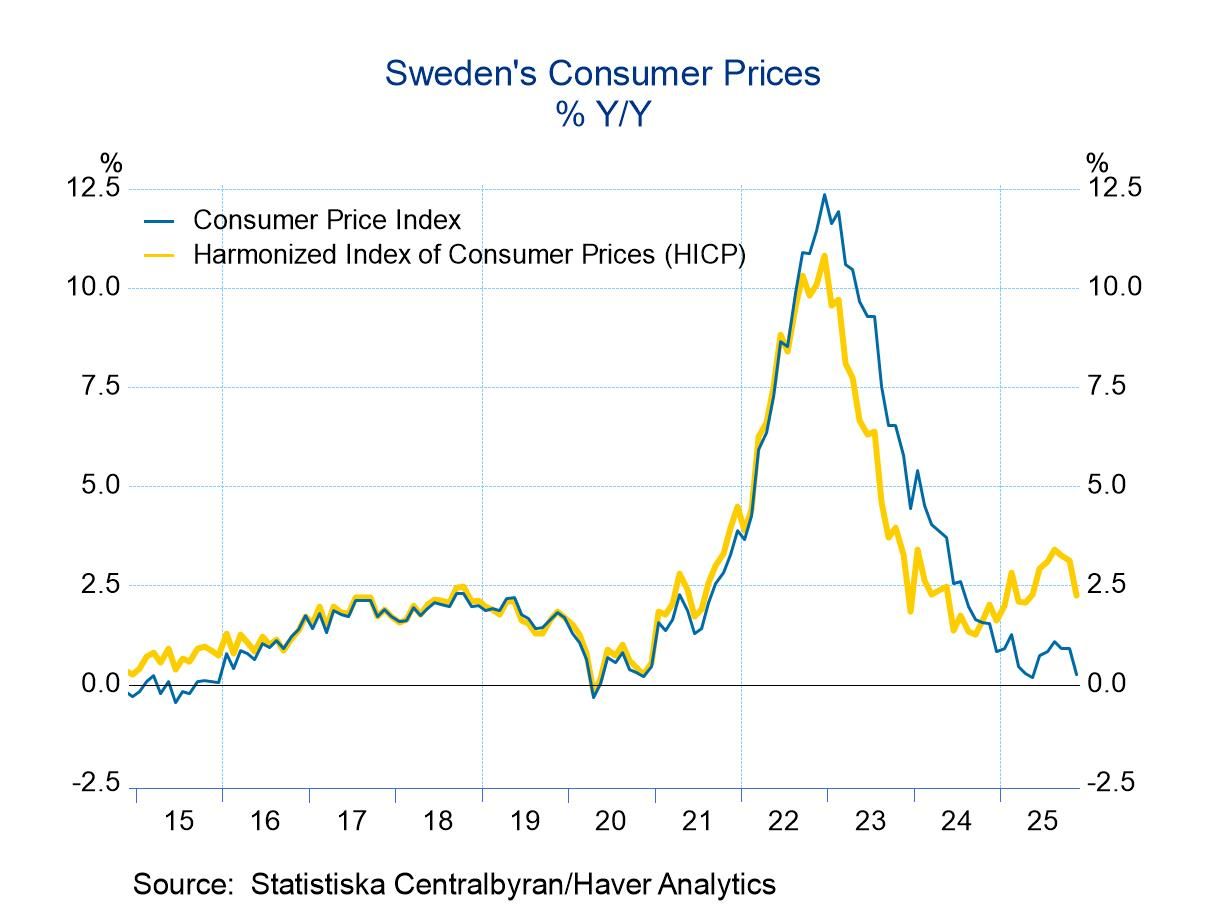U.S. Business Inventories Hold Steady in July While Sales Rise
by:Tom Moeller
|in:Economy in Brief
Summary
- Retail inventories rise modestly but wholesale inventories decline.
- Retail, wholesale & factory sales strengthen.
- Business sector inventory-to-sales ratio eases.


Total business inventories were unchanged in July (+1.4% y/y) following a 0.1% June decline, revised from no change. A 0.1% increase had been expected in the Informa Global Markets Survey. The level of business inventories has been fairly stable since late last year.
The unchanged level of business inventories followed six months of little change. Retail inventories rose 0.2% (4.3% y/y) following a 0.5% June increase. Motor vehicle & parts inventories increased 0.8% in July (22.3% y/y) after a 1.3% June rise. Excluding autos, retail inventories were little-changed (-1.4% y/y) following a 0.2% advance in June. Clothing & accessory store inventories rose 0.4% (1.3% y/y) after 0.8% decline. Food & beverage store inventories increased 0.2% (4.4% y/y) following a 0.6% June gain. General merchandise store inventories edged 0.1% higher in July (-3.9% y/y) following a 0.2% rise. Department store inventories, however, fell 1.6% (-11.4% y/y) after rising 0.7% in June. Also falling by 1.8% (-11.8% y/y), for the fifth consecutive monthly decline, were furniture, electronics & appliance inventories. Reported earlier, wholesale inventories fell 0.2% (+0.5% y/y), the seventh decline in eight months. Factory inventories rose 0.1% (-0.3% y/y) after falling 0.2% in each of the prior two months.
Total business sales increased 0.6% (-1.2% y/y) in July after falling 0.2% in June. Merchant wholesale sales increased 0.8% (-4.2% y/y), reversing a 0.8% June decline. Factory sector shipments rose 0.5% (-0.6% y/y) following a 0.2% June rise. Retail sales rose 0.4% (1.5% y/y) following a 0.1% uptick.
As sales rose faster than inventories in July, the total I/S ratio eased to 1.39 from 1.40. It was the lowest ratio since February, but was increased from a low of 1.27 in October 2021. The manufacturing I/S ratio was unchanged at 1.48 in July. The wholesale I/S ratio fell to 1.39 in July from 1.41 in June, while the retail I/S ratio held steady at 1.30, matching its highest since May 2020.
The manufacturing and trade data are in Haver’s USECON database. The Informa Global Markets forecast is in the MMSAMER database.


Tom Moeller
AuthorMore in Author Profile »Prior to joining Haver Analytics in 2000, Mr. Moeller worked as the Economist at Chancellor Capital Management from 1985 to 1999. There, he developed comprehensive economic forecasts and interpreted economic data for equity and fixed income portfolio managers. Also at Chancellor, Mr. Moeller worked as an equity analyst and was responsible for researching and rating companies in the economically sensitive automobile and housing industries for investment in Chancellor’s equity portfolio. Prior to joining Chancellor, Mr. Moeller was an Economist at Citibank from 1979 to 1984. He also analyzed pricing behavior in the metals industry for the Council on Wage and Price Stability in Washington, D.C. In 1999, Mr. Moeller received the award for most accurate forecast from the Forecasters' Club of New York. From 1990 to 1992 he was President of the New York Association for Business Economists. Mr. Moeller earned an M.B.A. in Finance from Fordham University, where he graduated in 1987. He holds a Bachelor of Arts in Economics from George Washington University.




 Global
Global

